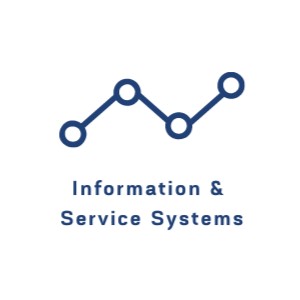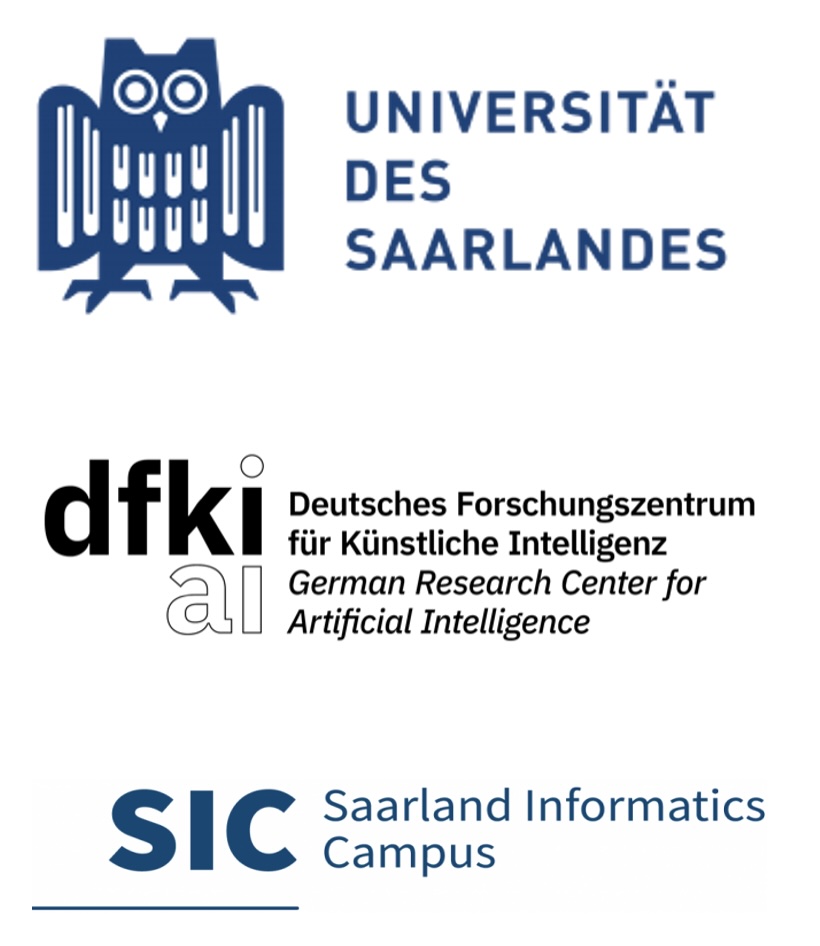Publications
Large language models for conceptual modeling: Assessment and application potential
Veda C. Storey and Oscar Pastor and Giancarlo Guizzardi and Stephen W. Liddle and Wolfgang Maaß and Jeffrey Parsons and Jolita Ralyté and Maribel Yasmina Santos
Data & Knowledge Engineering
Large Language Models (LLMs) are being rapidly adopted for many activities in organizations, business, and education. Included in their applications are capabilities to generate text, code, and models. This leads to questions about their potential role in the conceptual modeling part of information systems development. This paper reports on a panel presented at the 43rd International Conference on Conceptual Modeling where researchers discussed the current and potential role of LLMs in conceptual modeling. The panelists discussed applications and interest levels and expressed both optimism and caution in the adoption of LLMs. Suggested is a need for much continued research by the conceptual modeling community on LLM development and their role in research and teaching.
Large Language Models (LLMs) are being rapidly adopted for many activities in organizations, business, and education. Included in their applications are capabilities to generate text, code, and models. This leads to questions about their potential role in the conceptual modeling part of information systems development. This paper reports on a panel presented at the 43rd International Conference on Conceptual Modeling where researchers discussed the current and potential role of LLMs in conceptual modeling. The panelists discussed applications and interest levels and expressed both optimism and caution in the adoption of LLMs. Suggested is a need for much continued research by the conceptual modeling community on LLM development and their role in research and teaching.
Adaptive Knowledge Distillation for Efficient Domain-Specific Language Models
Saxena, P., Janzen, S., & Maass, W.
19th Women in Machine Learning workshop (WiML 2024) at NeurIPS
Presents an adaptive knowledge distillation framework to create efficient domain-specific language models.
Conceptual Modeling: 43rd International Conference, ER 2024, Pittsburgh, PA, USA, October 28-31, 2024, Proceedings. Vol. 15238
Maass, Wolfgang, et al.
Springer Nature
Proceedings of the 43rd International Conference on Conceptual Modeling, presenting the latest advancements in the field.
Digital Resilience in Flux: A Comparative Analysis in Manufacturing Pre- and Post-Crisis
Stein, H., Janzen, S., Haida, B., Maass, W.
HICSS 57/24. Hawaii International Conference on System Sciences (HICSS-2024)
Analyzes digital resilience in manufacturing industries during crises.
From Stateless to Adaptive: Dynamic Personalization for Conversational Language Models
Agnes, C.K. & Maass, W.
19th Women in Machine Learning workshop (WiML 2024) at NeurIPS
Explores dynamic personalization techniques to adapt conversational language models to user needs.
Incorporating Metabolic Information into LLMs for Anomaly Detection in Clinical Time-Series
Rahman, M.R., Liu, R., & Maass, W.
NeurIPS 2024 Workshop on Time Series in the Age of Large Models
Proposes incorporating metabolic data into large language models to detect anomalies in clinical time-series data.
Listening In: Social Signal Detection for Crisis Prediction
Janzen, S., Saxena, P., Baer, S., Maass, W.
HICSS 57/24. Hawaii International Conference on System Sciences (HICSS-2024)
Crises send out early warning signals, mostly weak and difficult to detect amidst the noise of everyday life. Signal detection based on social media enables early identification of such signals supporting pro-active organizational responses before a crisis occurs. Nonetheless, social signal detection based on Twitter data is not applied in crisis management in practice as it is challenging due to the high volume of noise. With OSOS, we introduce a method for open-domain social signal detection of crisis-related indicators in tweets. OSOS works with multi-lingual Twitter data and combines multiple state-of-the-art models for data pre-processing (SoMaJo) and data filtration (GPT-3). It excels in crisis domains by leveraging fine-tuned GPT-3FT (Curie) model and achieving benchmark results in the CrisisBench dataset. The method was exemplified within a signaling service for crisis management. We were able to evaluate the proposed approach by means of a data set obtained from Twitter (X) in terms of performance in identifying potential social signals for energy-related crisis events.
Crises send out early warning signals, mostly weak and difficult to detect amidst the noise of everyday life. Signal detection based on social media enables early identification of such signals supporting pro-active organizational responses before a crisis occurs. Nonetheless, social signal detection based on Twitter data is not applied in crisis management in practice as it is challenging due to the high volume of noise. With OSOS, we introduce a method for open-domain social signal detection of crisis-related indicators in tweets. OSOS works with multi-lingual Twitter data and combines multiple state-of-the-art models for data pre-processing (SoMaJo) and data filtration (GPT-3). It excels in crisis domains by leveraging fine-tuned GPT-3FT (Curie) model and achieving benchmark results in the CrisisBench dataset. The method was exemplified within a signaling service for crisis management. We were able to evaluate the proposed approach by means of a data set obtained from Twitter (X) in terms of performance in identifying potential social signals for energy-related crisis events.
Newspaper Signaling for Crisis Prediction
Saxena, P., Janzen, S., & Maass, W.
Proceedings of the 2024 Conference of the North American Chapter of the Association for Computational Linguistics (NAACL): Human Language Technologies (Volume 3: System Demonstrations)
Demonstrates how newspaper signals can be leveraged for predicting crises using natural language processing techniques.
Plan Generation from Unstructured Documents Through Transformer-Based Extraction of Knowledge-Graphs
Maass, W.; Agnes, Cicy K.; and Harig, Amin
ECIS 2024
Planning for complex tasks is a key task for knowledge workers that is often time-consuming and depends on the manual extraction of knowledge from documents. In this research, we propose an end-to-end method, called PlanKG, that: (1) extracts knowledge graphs from full-text plan descriptions (FTPD); and (2) generates novel FTPD according to plan requirements and context information provided by users. From the knowledge graphs, activity sequences are obtained and projected into embedding spaces. We show that compressed activity sequences are sufficient for the search and generation of plan descriptions. The PlanKG method uses a pipeline consisting of decoder-only transformer models and encoder-only transformer models. To evaluate the PlanKG method, we conducted an experimental study for movie plot descriptions and compared our method with original FTPDs and FTPD summarizations. The results of this research has significant potential for enhancing efficiency and precision when searching and generating plans.
Planning for complex tasks is a key task for knowledge workers that is often time-consuming and depends on the manual extraction of knowledge from documents. In this research, we propose an end-to-end method, called PlanKG, that: (1) extracts knowledge graphs from full-text plan descriptions (FTPD); and (2) generates novel FTPD according to plan requirements and context information provided by users. From the knowledge graphs, activity sequences are obtained and projected into embedding spaces. We show that compressed activity sequences are sufficient for the search and generation of plan descriptions. The PlanKG method uses a pipeline consisting of decoder-only transformer models and encoder-only transformer models. To evaluate the PlanKG method, we conducted an experimental study for movie plot descriptions and compared our method with original FTPDs and FTPD summarizations. The results of this research has significant potential for enhancing efficiency and precision when searching and generating plans.
Quantum Computing Enhanced Service Ecosystem for Simulation in Manufacturing
Maass, W., Agrawal, A., Ciani, A., Danz, S., Delgadillo, A., … & Wilhelm, F. K.
arXiv preprint arXiv:2401.10623. Published in: Künstl Intell (2024)
This paper explores the integration of quantum computing into service ecosystems to enhance manufacturing simulations.
Quantum Feature Embeddings for Graph Neural Networks
Xu, S., Wilhelm-Mauch, F., Maass, W.
HICSS 57/24. Hawaii International Conference on System Sciences (HICSS-2024)
Introduces quantum feature embeddings for improving the performance of graph neural networks.
REAVER: Real-time Earthquake Prediction with Attention-based Sliding-Window Spectograms
Khaliq, L.A., Janzen, S., Maass, W.
Proceedings of the International Joint Conference on Artificial Intelligence (IJCAI 2024)
REAVER introduces an attention-based sliding-window spectogram approach for real-time earthquake prediction.
SACNN: Self Attention-based Convolutional Neural Network for Fraudulent Behaviour Detection in Sports
Rahman, M.R., Khaliq, L.A., Piper, T., Geyer, H., Equey, T., Baume, N., Aikin, R., Maass, W.
Proceedings of the International Joint Conference on Artificial Intelligence (IJCAI 24)
This paper presents a Self Attention-based Convolutional Neural Network (SACNN) designed to detect fraudulent behavior in sports data.
Semantic Priming via Knowledge Graphs to Analyze and Treat Language Model’s Honest Lies
Agnes, C.K., Rahman, M.R., & Maass, W.
ICIS 2024 Proceedings
Uses semantic priming and knowledge graphs to address and mitigate errors in language models.
Towards Requirements Engineering for Quantum Computing Applications in Manufacturing
Stein, H., Schröder, S., Kienast, P., Kulig, M.
HICSS 57/24. Hawaii International Conference on System Sciences (HICSS-2024)
Discusses the challenges and opportunities in requirements engineering for quantum computing in manufacturing.

